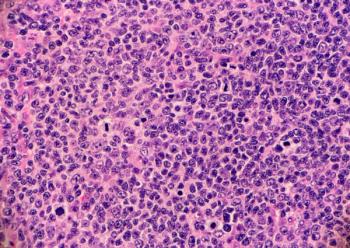Key Takeaways from the BATURA Trial
- Airsupra Reduces Severe Exacerbations by 47%
In the Phase IIIb BATURA trial, Airsupra (albuterol/budesonide) significantly lowered the risk of severe asthma exacerbations in patients with mild disease compared to albuterol monotherapy (HR 0.53; p<0.001).
- Lower Systemic Steroid Exposure
Patients receiving Airsupra had a 63% reduction in mean annualized systemic corticosteroid use, addressing a major concern in long-term asthma management.
- Data Supports Evolving Global Guidelines
The BATURA results align with Global Initiative for Asthma (GINA) recommendations endorsing anti-inflammatory reliever therapy as-needed for mild asthma, reinforcing a shift away from albuterol-only rescue treatment.
Full results from the Phase IIIb BATURA trial (NCT05505734) published by The New England Journal of Medicine (NEJM) show Airsupra (albuterol/budesonide) significantly outperformed albuterol monotherapy in lowering severe asthma exacerbations by 47% in patients with mild disease.1-3
BATURA Phase IIIb Trial Confirms Airsupra’s Superiority Over Albuterol in Mild Asthma Management
The trial demonstrated statistically significant and clinically meaningful improvements across all primary and secondary endpoints in the Airsupra cohort, prompting an Independent Data Monitoring Committee to recommend an early stop to the study based on these efficacy data.
“The unprecedented BATURA trial results provide an opportunity to change 50 years of clinical practice in asthma. For decades, millions of patients have relied on albuterol-only rescue treatment in asthma, leaving them unprotected against the increasing airway inflammation that could lead to a more serious attack,” lead study author Craig LaForce, MD, medical director of North Carolina Clinical Research, said in a press release. “The results from the Airsupra BATURA trial add to a wide body of evidence on the value of the anti-inflammatory reliever rescue approach to not only provide immediate relief from symptoms, but also reduce inflammation to prevent future and more severe exacerbations for patients living with asthma across all severities.”1
Clinical Implications for Mild Asthma: Challenging the Albuterol-Only Standard
Airsupra is a first-in-class, pressurized metered-dose inhaler, fixed-dose combination rescue therapy. The medication was approved by the FDA in January 2023 for as-needed treatment or to prevent bronchoconstriction, as well as to reduce the risk of exacerbations in patients with asthma aged 18 years and older.4
The approval was based on findings from the Phase III MANDALA and DENALI trials. The MANDALA trial showed that Airsupra as an as-needed rescue medication significantly lowered the risk of severe asthma exacerbations compared with albuterol in patients with moderate to severe asthma in response to symptoms. Airsupra also significantly lowered mean annualized total systemic corticosteroid exposure at the approved dose of 180 mcg albuterol/160 mcg budesonide compared with albuterol, achieving the trial’s secondary endpoint.
The DENALI trial showed that Airsupra significantly improved lung function compared to individual albuterol and budesonide in patients with mild to moderate asthma.
“A retrospective claims study suggested that a ‘window of opportunity’ may exist to prevent a severe exacerbation in patients who have uncontrolled disease despite treatment for mild asthma (defined by the filling of a prescription for a [short-acting β2-agonist (SABA)], a maintenance medication appropriate for mild persistent asthma, or both) if symptoms and inflammation are addressed concomitantly,” the authors of the NEJM study wrote. “In line with this concept and recommendations from the GINA, the combination of albuterol and budesonide in a single pressurized metered-dose inhaler allows patients to receive an inhaled glucocorticoid when they need it by using their rescue therapy in response to symptoms.”1
Trial Design and Methodology: Virtual, Double-Blind, and Decentralized Approach
- The fully virtual, decentralized, multicenter, double-blind, event-driven BATURA trial analyzed the efficacy and safety of inhaled Airsupra as an as-needed rescue treatment compared to as-needed albuterol for up to 52 weeks.
- Investigators enrolled patients 12 years of age and older with intermittent or mild persistent asthma.
- Patients were required to have been using an as-needed SABA alone or using as-needed SABA on a background of either low-dose inhaled corticosteroid or a leukotriene receptor agonist to treat asthma.
- The trial’s primary endpoint was time to first severe asthma exacerbation during the study, with secondary endpoints that included severe exacerbation rate and total systemic corticosteroid use.
- Among 2516 participants who underwent randomization for the trial, 1797 completed it. A total of 2421 patients were included in the full analysis population.
- Patients were randomly assigned in a 1:1 ratio to receive a fixed-dose combination of 180 μg of albuterol and 160 μg of budesonide (n = 1209) with dosing comprised of two inhaler actuations of 90 μg and 80 μg, respectively; or to receive 180 μg of albuterol (n = 1212), with dosing comprised of two inhaler actuations of 90 μg each.
BATURA Data Reinforce Global Asthma Guideline Shifts Toward Combination Rescue Therapy
- In the on-treatment efficacy population, severe exacerbations were reported in 5.1% of patients in the albuterol–budesonide cohort compared to 9.1% of patients in the albuterol monotherapy cohort (hazard ratio, 0.53; 95% confidence interval [CI], 0.39 to 0.73; P<0.001) In the intention-to-treat population, severe exacerbations were reported in 5.3% of patients in the albuterol–budesonide cohort compared to 9.4% of patients in the albuterol monotherapy cohort (hazard ratio, 0.54; 95% CI, 0.40 to 0.73; P<0.001).
- The annualized rate of severe asthma exacerbations was 0.15 in the albuterol–budesonide cohort compared to 0.32 in the albuterol monotherapy cohort (rate ratio, 0.47; 95% CI, 0.34 to 0.64), while the mean annualized total dose of systemic glucocorticoids was 23.2 mg per year in the albuterol–budesonide cohort compared 61.9 mg per year in the albuterol monotherapy cohort.
"The results of a recent systematic review and meta-analysis of randomized trials in any type of asthma showed that rescue therapy with combination inhaled glucocorticoid–formoterol or inhaled glucocorticoid–SABA was associated with better asthma control and fewer exacerbations than a SABA only," the study authors wrote in NEJM. "Together with the findings of the BATURA trial, these results support the use of inhaled glucocorticoid–containing rescue therapy for persons treated for mild asthma."1
In terms of safety, adverse event reports were similar among both cohorts and no new safety signals were reported.
Expert Perspectives on Changing the Asthma Treatment Paradigm
“Patients who live with asthma are often at risk for unexpected exacerbations. Using an anti-inflammatory reliever therapy can transform every use of a rescue inhaler into an opportunity for early intervention to address the underlying inflammation of asthma, helping to prevent attacks and reduce exposure to systemic steroids,” said Tonya Winders, president of Global Allergy and Airways Patient Platform, in the release. “This is especially important for patients with mild asthma whose risk for severe exacerbations is often underestimated."3
References
1. LaForce C., et al. As-Needed Albuterol–Budesonide in Mild Asthma. N Engl J Med 2025; https://www.nejm.org/doi/full/10.1056/NEJMoa2504544
2. A Comparison of PT027 vs PT007 Used as Needed in Participants With Asthma. ClinicalTrials.gov. Updated August 29, 2024. Accessed May 20, 2025. https://clinicaltrials.gov/study/NCT05505734
3. Statistically significant and clinically meaningful BATURA Phase III trial results provide new evidence for Airsupra as standard of care for as-needed rescue treatment in asthma. News release. AstraZeneca. May 19, 2025. Accessed May 20, 2025. https://www.astrazeneca.com/media-centre/press-releases/2025/statistically-significant-clinically-meaningful-batura-phase-iii-trial-provide-evidence-airsupra-standard-care-as-needed-rescue-treatment-asthma.html
4. Airsupra (PT027) approved in the US for asthma. News release. AstraZeneca. January 11, 2023. Accessed May 20, 2025. https://www.astrazeneca.com/media-centre/press-releases/2023/airsupra-pt027-approved-in-the-us-for-asthma.html




